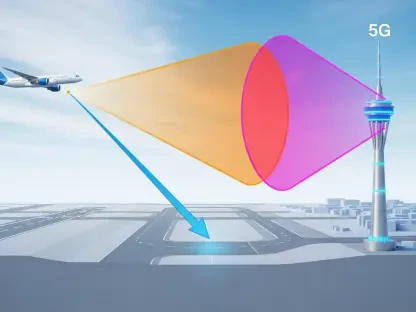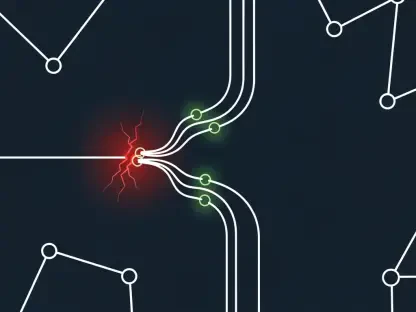In an era where digital connectivity forms the backbone of economic growth and technological innovation, Southeast Asia stands at a critical juncture, grappling with the challenge of meeting skyrocketing bandwidth demands driven by advancements in artificial intelligence, cloud computing, and smart city projects. The region, a bustling hub of over 600 million people, is witnessing an unprecedented surge in data consumption, yet faces significant bottlenecks due to limited and often congested submarine cable routes. Amid this backdrop, a transformative project emerges as a beacon of progress, promising to redefine the digital landscape. The Indonesia Cable Express II (ICE II) submarine cable system, with its recent expansion plans, is poised to address these challenges head-on, offering a robust alternative to traditional connectivity pathways and paving the way for a more interconnected future. This development is not just about laying cables beneath the ocean; it’s about laying the foundation for a digitally empowered region ready to embrace the next wave of innovation.
Enhancing Regional Connectivity
Bridging Digital Divides in East Malaysia
The strategic expansion of the ICE II submarine cable system to include a landing point in Kuching, Sarawak, marks a significant step toward bridging the digital divide in East Malaysia. This initiative, driven by a collaboration between Telin, Sarawak Digital Economy Corporation, and a Malaysian engineering firm, extends beyond earlier plans to connect Tawau, Sabah, and other key locations like Sandakan, Kudat, and Kota Kinabalu. By integrating Sarawak into this high-capacity fiber-optic network, the project ensures that even less-connected areas gain access to global digital highways. This move is crucial for fostering economic opportunities in regions that have historically lagged in technological infrastructure. The enhanced connectivity will support local businesses, educational institutions, and government services, enabling them to leverage digital tools and platforms that were previously out of reach due to bandwidth constraints or unreliable connections.
Alternative Routes for Resilience
Another pivotal aspect of the ICE II system is its design to provide an alternative eastward route via Manado, Indonesia, circumventing the heavily congested South China Sea corridor. This innovative approach addresses a long-standing vulnerability in Southeast Asia’s digital infrastructure, where reliance on a single pathway often leads to disruptions and latency issues during high-traffic periods or geopolitical tensions. By diversifying connectivity options, the cable system enhances resilience against potential outages and ensures a more stable internet experience for millions of users. This is particularly vital as the region becomes a hotspot for data-intensive technologies such as the Internet of Things and real-time analytics. The strategic branching points in locations like Batam, Jakarta, Surabaya, Makassar, and various parts of Borneo Island further amplify the network’s reach, ensuring that data flows seamlessly across borders and into global hubs like North Asia and the United States.
Driving Technological and Economic Growth
Fueling Innovation with High-Capacity Infrastructure
The ICE II cable system is not merely an infrastructure project; it’s a catalyst for technological innovation across Southeast Asia. With its high-capacity design, the network is built to handle the immense data requirements of emerging technologies such as artificial intelligence, cloud platforms, and smart city initiatives. This capability is essential for businesses and governments looking to adopt cutting-edge solutions that drive efficiency and competitiveness. For instance, AI-driven applications, which require vast amounts of data to be processed in real time, will benefit immensely from the reduced latency and increased bandwidth that ICE II offers. Moreover, the system’s connectivity to global hubs positions the region as an attractive destination for tech investments, potentially spurring the development of green data centers and other sustainable digital infrastructure. This lays the groundwork for a future where Southeast Asia is not just a consumer but a creator of digital innovation.
Empowering Digital Economies Regionally
Beyond technology, the economic implications of the ICE II expansion are profound, particularly for regions like Sarawak that are eager to transition into fully-fledged digital economies. The enhanced connectivity fosters an environment ripe for e-commerce, digital banking, and remote work, sectors that have become indispensable in the modern economic landscape. By linking local markets to international networks, the cable system enables small and medium-sized enterprises to compete on a global stage, driving job creation and income growth. Additionally, the project aligns with broader regional goals of digital transformation, as articulated by industry leaders who see such infrastructure as a cornerstone of economic resilience. With plans to connect Indonesia to major global hubs like Japan, the Middle East, Europe, and Australasia over the next few years, starting from now until 2028, the ICE II system promises to be a linchpin in positioning Southeast Asia as a powerhouse of digital economic activity.
Reflecting on a Digital Milestone
Looking back, the expansion of the ICE II submarine cable system stood as a defining moment in Southeast Asia’s journey toward digital empowerment. The strategic decision to include Sarawak as a key landing point, alongside other East Malaysian hubs, addressed long-standing connectivity gaps and fortified the region’s infrastructure against future challenges. As the project unfolded, its impact on technological adoption and economic vitality became evident, reshaping how communities and businesses engaged with the global digital ecosystem. Moving forward, stakeholders must prioritize sustained investment in such initiatives, ensuring that maintenance and upgrades keep pace with evolving demands. Collaboration between governments, private entities, and regional bodies will be essential to maximize the benefits of this network. Additionally, exploring further expansions to underserved areas could amplify the transformative power of this milestone, setting a precedent for how strategic infrastructure can drive progress in an increasingly connected world.









